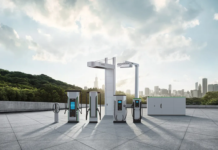
Since launching in September 2022, UK based Pulsiv Limited has gained widespread attention with its unique technology for designing more energy efficient power supplies and battery chargers. Pulsiv OSMIUM microcontrollers and AC to DC front-end circuit configurations are already available and now to accelerate R&D, the first in a series of reference designs has been officially launched to the market.
The new cost-optimised reference designs offer 75W (85W peak) & 100W (150W peak) output power with universal mains input and 48V output. The Pulsiv OSMIUM microcontroller and supporting components have been combined with a quasi-resonant flyback DC-DC converter to deliver an end-to-end flat efficiency of 90% (91.5% peak) from just 10W, comfortably exceeding the US DoE Level VI and EU CoC Tier 2 requirements. These reference designs can be further optimised using GaN and SiC technology where performance or size are more important than cost.
These reference designs can be further optimised using GaN and SiC technology where performance or size are more important than cost.
Design packages can be downloaded from www.pulsiv.co.uk/reference-designs which provide a comprehensive Datasheet, Bill of Materials, Schematic and full set of Altium files.
Pulsiv OSMIUM ensures that critical components operate at low temperatures to extend expected lifetime and ensure long-term reliability even under convection cooling. Inrush current has been completely eliminated, removing the need for additional current limiting components. Manufacturers of industrial power supplies and LED lighting solutions can benefit further by simplifying designs and improving system installations.
Explains CEO Darrel Kingham: “Tackling the global energy crisis and delivering ambitious sustainability targets will require the electronics industry to embrace technology innovation and challenge conventional thinking. Pulsiv OSMIUM reference designs offer a cost effective method to reduce the amount of energy consumed in AC to DC power supplies and battery chargers under all operating conditions. By delivering consistently high efficiency without compromising system cost, sustainable product design will become the default choice.”


















